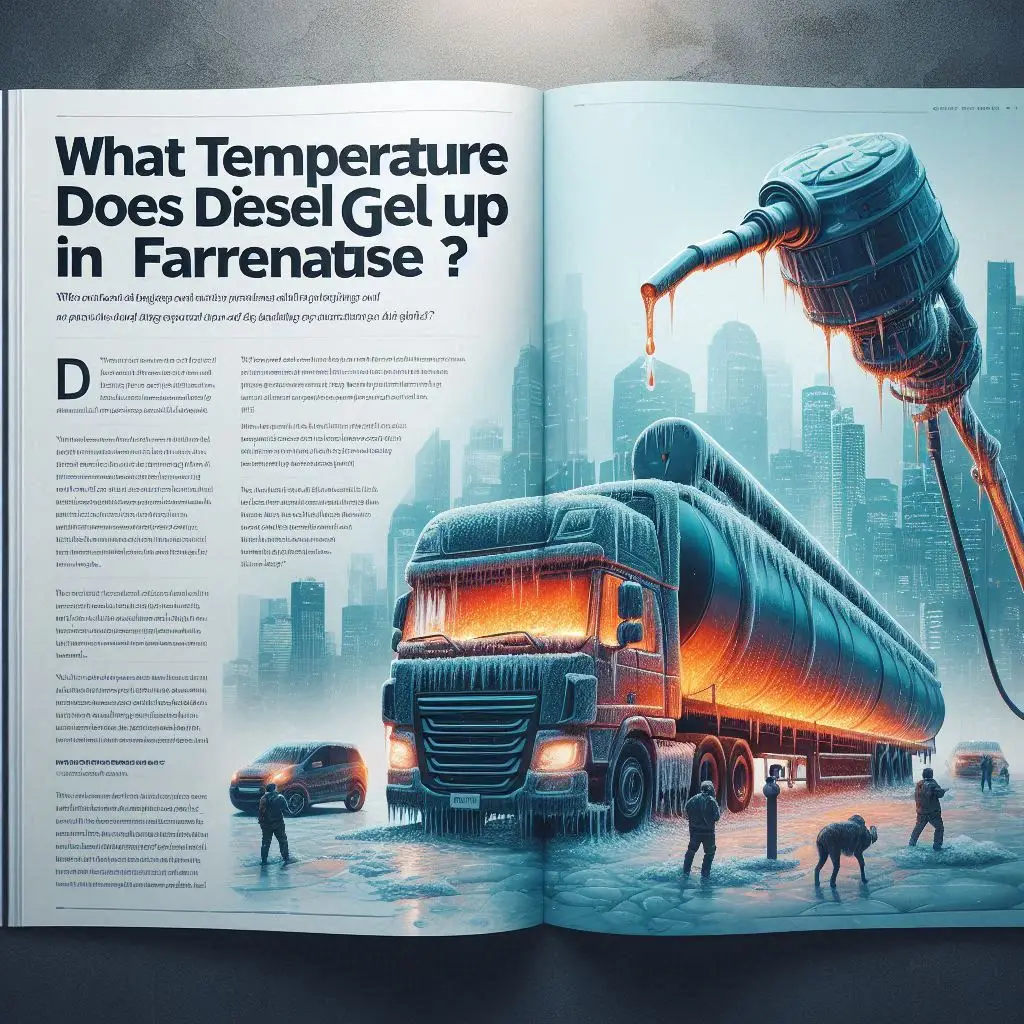
At What Temp Does Diesel Gel Up in Fahrenheit
Introduction
This article, At What Temp Does Diesel Gel Up in Fahrenheit, explores the temperatures that trigger diesel gelling, with a focus on Fahrenheit, and explains how EN590 diesel behaves under cold conditions.
Diesel fuel, particularly EN590 diesel, plays a vital role in powering vehicles, heavy machinery, and generators worldwide. However, its performance is heavily influenced by temperature, especially in colder climates. As temperatures drop, diesel can experience a phenomenon known as "gelling." This occurs when the fuel's paraffin content solidifies, impeding fuel flow. Understanding the specific temperature at which diesel gels are crucial for ensuring smooth engine operation, particularly during winter months.
At What Temp Does Diesel Gel?
At what temp does diesel gel? Diesel fuel starts to gel when the temperature falls below a critical threshold known as the cloud point. At this stage, tiny wax crystals form, giving the fuel a cloudy appearance. If the temperature continues to drop, the fuel eventually reaches its pour point, where it thickens and no longer flows freely. For most conventional diesel fuels, this process begins around 20°F (-6°C), but the specific temperature can vary based on the type of fuel and its formulation.
EN590 diesel, commonly used in Europe and designed to meet stricter emission standards, often contains additives that lower the gelling point. These additives prevent the formation of wax crystals, allowing the fuel to remain fluid at lower temperatures compared to standard diesel. This feature is particularly important for vehicles operating in colder regions where temperatures can dip significantly.
In areas with extreme cold, untreated diesel may gel faster, leading to clogged fuel lines and filters. This is why many operators use winter blends or additives designed to keep diesel flowing smoothly during subzero conditions. Proper fuel management, including the use of anti-gel additives, ensures engines can start and run efficiently even when the mercury plunges.
At What Temp Does Diesel Gel Up?
At what temp does diesel gel up? Diesel gels up when temperatures drop far enough for the fuel's wax content to solidify, creating blockages in fuel lines and filters. For most types of diesel, this occurs when temperatures fall below 20°F (-6°C). However, factors such as fuel composition and the use of additives can shift this threshold. EN590 diesel is formulated with cold-weather performance in mind and typically resists gelling at temperatures lower than standard diesel, around 5°F to -10°F (-15°C to -23°C).
The term "gelling up" refers to the complete solidification of the fuel, which can prevent the engine from starting or cause it to stall if already running. In colder climates, this issue can be mitigated by using specially blended winter diesel or by adding anti-gel agents to the fuel tank. These products alter the properties of the fuel, lowering its cloud point and pour point to ensure it remains usable even in freezing temperatures.
Diesel engines depend on a steady flow of fuel to operate efficiently, and when the fuel gels, it can cause significant issues, including mechanical damage. Regular maintenance, such as replacing fuel filters and ensuring the fuel system is free of moisture, can also help prevent gelling during cold weather.
At What Temp Does Diesel Gel in Fahrenheit?
At what temp does diesel gel in Fahrenheit? The exact temperature at which diesel gels varies based on fuel type and additives, but for standard diesel fuel, it usually begins to gel at around 20°F (-6°C). In contrast, EN590 diesel, which meets European fuel standards, often remains fluid until temperatures reach about 5°F to -10°F (-15°C to -23°C). This makes it a more suitable choice for regions with colder climates.
Diesel gelling occurs when the paraffin wax naturally present in diesel begins to crystallize as the temperature drops. As these crystals form and accumulate, they can block the fuel filter and lines, preventing the diesel from reaching the engine. This can result in hard starts, reduced performance, or even engine failure. To counteract this, operators in colder regions often use winter-grade diesel or anti-gel additives.
In the U.S., especially in regions where temperatures regularly fall below freezing, diesel users are advised to be proactive. Ensuring that fuel is treated with anti-gel additives and keeping vehicles in insulated environments or garages can prevent gelling. Monitoring fuel quality and ensuring proper storage conditions are also crucial to maintaining the flow of diesel in extreme cold.
Conclusion
Understanding at what temperature diesel gels up is essential for anyone relying on diesel-powered equipment in cold weather. Diesel fuel, including EN590 diesel, generally starts to gel at around 20°F (-6°C) for standard formulations, though EN590 can tolerate lower temperatures, often as cold as -10°F (-23°C). The risk of fuel gelling can be mitigated by using winterized diesel blends, adding anti-gel additives, and following proper maintenance practices.
By being aware of the temperatures that cause diesel gelling and taking preventive measures, operators can ensure their diesel engines remain reliable throughout the coldest months. Whether using EN590 diesel or another formulation, proactive management is key to avoiding fuel-related issues, ensuring engines perform optimally, even in freezing temperatures.

